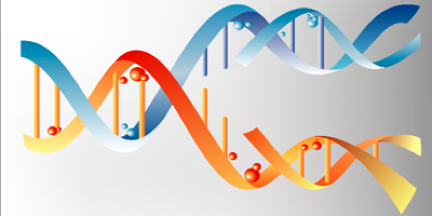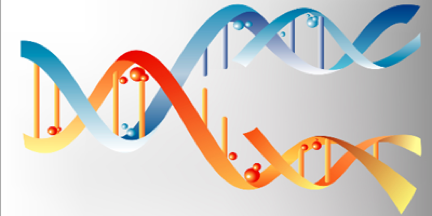Double, Double…Bubble
Many biological processes, such as how DNA is packed in a virus or combines with proteins to form nuclei in cells, depend on the flexibility of DNA strands. A single strand of DNA is understandably highly flexible, as it can rotate freely around chemical bonds. The double helix, with its hydrogen-bonded base pairs, is considerably more rigid. But how rigid?
One measure of flexibility of such a molecule is its persistence length, which is the distance beyond which correlations arising from thermal fluctuations die out. Experimentalists have studied the effect of temperature on DNA using multiple approaches. From these experiments one feature is clear: the persistence length quickly decreases with rising temperature.
To understand these thermal effects, theorists initially modeled DNA as homogeneous flexible rods, and subsequently as rods that have rigid sections interspersed with “flexible joints.” A possible origin of such joints is the so-called DNA bubble, a region where the double helix separates locally. Now, in a paper in Physical Review Letters, Nikos Theodorakopoulos at the National Hellenic Research Foundation, Greece, and Michel Peyrard at Ecole Normale Supérieure de Lyon, France, calculate in detail how two particular base sequences develop bubbles as they are heated, and how these bubbles in turn increase local flexibility. This quantitative link between bubbles and the temperature dependence of the persistence length turns out to be stronger than previously thought. Relatively few bubbles, or base-pair openings, suffice to change the persistence length significantly. A better knowledge of the persistence length should, in turn, provide a sensitive probe of how DNA strands separate. – Sami Mitra





